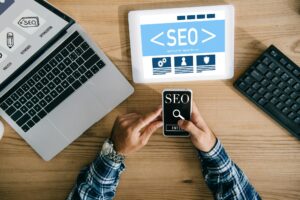Comprehensive visual brand guidelines | creating a visual identity!

Category:Graphic Design
Publish Date: 2023-11-10 23:57:33
In an era marked by an overwhelming surplus of information and an endless array of choices, the art of creating a visual identity has emerged as an indispensable factor in determining brand success. It’s no longer enough to have a product or service simply; to thrive in a competitive landscape, you must curate a visual identity that not only captivates your audience but also communicates the very essence of your brand. Welcome to this all-encompassing guide of visual brand guidelines, where we’ll explore the intricate world of visual identity and everything about visual identity graphic design examples.
Creating a visual identity is far more than just design; it’s a strategic endeavor, a thoughtful combination of aesthetics and intent. It’s the art of telling your brand’s story through visuals that resonate with your audience. It’s about conveying emotions, values, and promises at a glance, setting the stage for a lasting relationship. In the following sections, we’ll dive into the depths of visual identity, unveiling its crucial components and the psychology that underpins it. We’ll provide you with the tools, knowledge, and insights necessary to bring your brand’s identity to life and create an enduring impression.





If you plan to design the visual identity of your brand professionally, you can use our graphic design services. Visit Graphic design company in Vancouver to receive free advice and services.
Elements of Visual Identity
- Visual Brand Guidelines
- Logo Design
We also offer custom logo design services in Vancouver. If you wish, you can utilize our services and explore special plans.
- Website Design

Creating a Consistent Brand Image
Consistency is not just a buzzword; it’s the cornerstone of building a strong and recognizable brand. Think of you creating a visual identity as signing a signature that your brand leaves behind, a mark that customers should instantly recognize. Whether it’s your business cards, website, social media profiles, or even your product packaging, your visual identity should permeate every aspect of your business. Imagine a well-choreographed orchestra playing a symphony; the harmony arises from each instrument playing its part with precision. In the same way, consistency in your visual identity ensures that every piece of your brand contributes to the larger, harmonious whole. It reinforces the message you wish to convey, builds trust with your audience, and allows your brand to stand out in a crowded marketplace. Consistency also extends beyond aesthetics; it applies to the way you communicate, the tone you use in your content, and the promises you make and fulfill. When every touchpoint with your brand aligns seamlessly, it creates a memorable and compelling brand image. [elementor-template id=”19523″]The Psychology of Visual Identity
Visual brand guidelines don’t talk just about colors and shapes; it’s a powerful language that communicates with your audience on a subconscious level. Understanding the psychology behind it is fundamental to crafting an effective identity. Colors, for instance, carry emotional weight. Warm colors like red and orange can evoke feelings of excitement, energy, and passion. In contrast, cool colors like blue and green often convey a sense of calm, trust, and professionalism. By selecting the right color palette for your brand, you can influence how your audience perceives and feels about your products or services. The choice of shapes and design elements also plays a pivotal role in creating a visual identity. For instance, the use of curves and rounded shapes can evoke feelings of comfort and approachability. At the same time, sharp angles can convey a sense of strength and precision.Visual Identity in the Digital Age
In today’s digital landscape, the way we perceive and interact with brands has undergone a profound transformation. The internet has brought brands closer to their audiences, allowing for immediate and continuous engagement. With this digital shift, the act of creating a visual identity, must adapt to new challenges and opportunities. It must be adaptable, responsive, and optimized for various devices and screen sizes. Mobile-friendly websites, for instance, are no longer a luxury but a necessity. The majority of users access the internet via smartphones, and a clunky or unresponsive website can deter potential customers. Furthermore, your social media presence has become a significant extension of your brand. It’s where you can directly interact with your audience, share your story, and showcase your visual identity. In this context, your visuals should be not only compelling but also consistent, ensuring that your social media platforms are a seamless extension of your brand’s personality. In essence, the digital age has provided a platform for brands to connect with their audience like never before. However, this connection depends heavily on a strong, adaptable, and visually engaging identity that can shine in the digital realm. Adaptation to the digital world is not an option; it’s a necessity for any brand wishing to thrive in the 21st century.
Case Studies in creating a visual identity
The power of a well-crafted visual identity becomes evident when we take a closer look at case studies of iconic brands and visual brand guidelines. Companies like Apple, Nike, and Coca-Cola have mastered the art of visual identity, which in turn has propelled them to global recognition and unwavering customer loyalty. So let’s take a look at some visual identity graphic design examples.- Apple: Apple’s sleek and minimalist design approach in its creating a visual identity, is reflected not only in its product design but also in its visual identity. The iconic Apple logo is a testament to simplicity and sophistication. This consistency in design across all its products and marketing materials has made Apple instantly recognizable and synonymous with innovation.
- Nike: Nike’s famous swoosh logo represents movement and energy, which aligns perfectly with the brand’s core values of athleticism and motivation. Their visual identity, centered on this symbol, has been consistently integrated into their products, advertising campaigns, and retail spaces, reinforcing their brand message with each exposure.
- Coca-Cola: The classic red and white color scheme of Coca-Cola is not just about colors; it’s about nostalgia and tradition. Coca-Cola’s way of creating a visual identity has remained remarkably consistent for over a century, and its logo is instantly associated with the refreshing experience of enjoying a cold Coke. This enduring visual identity has contributed significantly to their enduring success.
DIY vs. Professional Design
The decision between DIY design and professional design is a pivotal one. DIY or Do It Yourself options of creating a visual identity may seem cost-effective initially, but they often fall short of delivering a polished and effective visual identity. Services like graphic design, logo design, and website design by Ramikar offer a compelling alternative that can make a significant difference for your brand.- DIY: While it’s possible to create a basic visual identity on your own, it often lacks the finesse and depth that professional design offers. DIY designs may not fully capture the essence of your brand, leaving room for inconsistency and potential disconnect with your audience.
- Professional Design: Professional designers have the expertise to understand your brand’s unique qualities and translate them into a visual language that resonates with your audience. They ensure that every element, from colors to typography, aligns with your brand’s message. Services like those offered by Ramikar bring a wealth of experience and creativity to the table, ensuring that your visual identity becomes a competitive advantage rather than a liability.
If you desire, you can avail yourself of our affordable web design services in Vancouver.
Trends in Visual Identity
The result of creating a visual identity is not a stagnant entity; it evolves, influenced by changes in culture, technology, and design trends. Staying current with these trends is vital to keeping your brand fresh and relevant. Some of the trends in visual identity include:- Minimalism: The ‘less is more’ approach is a prevailing trend. Clean, simple designs with ample white space communicate sophistication and clarity.
- Flat Design: Flat design minimizes the use of three-dimensional effects and instead opts for a two-dimensional, simplified style. It’s highly effective for digital platforms and mobile apps.
- Skeuomorphism: Skeuomorphism uses design elements that mimic real-world objects. It can create a sense of familiarity and comfort for users.

Measuring the Effectiveness of Visual Identity
Determining the impact of your visual identity is not an option; it’s a necessity. You can assess this impact through a variety of metrics when creating a visual identity, including:- Brand Recognition: Track how quickly and accurately your target audience recognizes your brand. A strong visual identity ensures that your brand is unforgettable.
- User Engagement: Analyze how well your visuals engage your audience. Are they interacting with your content, staying on your website longer, or showing interest in your products or services?
- Conversion Rates: Evaluate how your visual identity affects conversion rates. Are customers taking the desired actions, whether that’s making a purchase, signing up for a newsletter, or requesting more information?
Tools and Resources for Visual Identity Design
In the ever-evolving realm of visual identity design, you’re fortunate to have an array of tools and resources at your disposal of creating a visual identity. Let’s explore these in depth:- Design Software: When it comes to professional design, Adobe Creative Suite reigns supreme. This suite includes software like Photoshop, Illustrator, and InDesign, which provide unparalleled capabilities for creating visual content. These tools allow you to manipulate and design images, create vector graphics, and design layouts for various marketing materials.
- Online Logo Makers: If you’re just starting and have a limited budget, there are numerous online logo makers available. Platforms like Canva and Looka offer user-friendly interfaces with pre-designed templates, making it accessible for anyone to create a basic logo. However, keep in mind that these tools may not offer the same level of customization and originality as professional design services.
- Stock Photo Websites: Stock photo websites like Shutterstock and Adobe Stock offer an extensive library of high-quality images and graphics that can be used to enhance your visual identity. These images are particularly useful for websites, social media posts, and marketing collateral. Always ensure you have the proper licenses to use these images to avoid legal issues.
- Professional Design Services: For a refined, unique, and impactful visual identity, it’s often best to turn to professional design services. Companies like Ramikar specialize in graphic design, logo design, and website design. These professionals bring expertise, creativity, and a deep understanding of design principles to the table, ensuring your brand’s visuals are not just appealing but also tailored to your specific needs and audience.

Common Mistakes to Avoid
Mistakes in creating a visual identity can be costly in both time and resources. Here are some common pitfalls to steer clear of in your visual brand guidelines:- Inconsistency: One of the most detrimental mistakes is failing to maintain consistency across all brand touchpoints. Inconsistency confuses your audience and dilutes your brand message. Ensure your visuals are uniform across all platforms and materials.
- Overly Complex Design: Simplicity often resonates more with your audience. Overly complex designs can overwhelm or confuse your audience. A cluttered design detracts from your brand’s message and can be off-putting.
- Ignoring the Target Audience: Your visual brand guidelines should note to be designed with your target audience in mind. Ignoring their preferences, tastes, and values can lead to a visual identity that fails to connect. Conduct market research and understand your audience to create visuals that resonate with them.
- Ignoring Trends Completely: While it’s important to stay true to your brand’s essence, completely disregarding design trends can make your brand appear outdated. Balance between timeless elements and contemporary trends to keep your brand fresh and relevant.
Future of Visual Identity
The future of creating a visual identity is an exciting and ever-evolving landscape. As technology continues to advance, the possibilities for brand expression expand. Here are some emerging trends and considerations for the future:- Immersive Experiences: With the rise of augmented reality (AR) and virtual reality (VR), brands can create immersive experiences that transport customers into their world. These technologies offer unique opportunities for storytelling and engagement.
- Virtual Reality: VR can provide an entirely immersive environment where brands can showcase their products and services. Think virtual showrooms, immersive product demonstrations, or virtual tours of physical spaces.
- Interactive Branding: Interactive branding goes beyond traditional advertising. It involves two-way communication, personalization, and dynamic content that adapts to the user’s needs and preferences. Chatbots, AI, and real-time personalization are becoming integral to interactive branding.
- Sustainability and Ethical Design: As environmental and social consciousness grows, sustainability and ethical design will play a significant role in the future of visual identity. Brands that embrace eco-friendly practices and ethical design principles will stand out.
In addition to graphic design services, you can take advantage of our videography and photography services in Vancouver.

Final thoughts
Creating a visual identity is an art and science that can define your brand’s success. visual brand guidelines are more than aesthetics; it’s about conveying your brand’s values and connecting with your audience. By understanding the elements, psychology, and the digital landscape, you can craft a visual identity that resonates with your customers better than every other visual identity graphic design examples. Don’t hesitate to explore services like graphic design, logo design, and website design by Ramikar to bring your vision to life. [elementor-template id=”19628″]FAQs
What is the difference between a logo and a visual identity? A logo is a part of the visual identity. It’s the central symbol or wordmark, while a visual identity includes all design elements used to represent a brand consistently. Why is consistency in visual identity important? Consistency creates brand recognition and trust. It ensures that your brand is easily identifiable, making it more likely for customers to remember and choose your products or services. How often should a brand update its visual identity? There’s no set time frame for updates. It depends on trends, audience changes, and business goals. Some brands update every few years, while others maintain a timeless look for decades. Can I create a visual identity on my own using design software? Yes, you can. Many tools are available for DIY design. However, for a professional and polished look, consider working with a graphic designer or design service like Ramikar. What are some emerging trends in visual identity for 2023? Emerging trends include the use of animation in logos, sustainability-focused branding, and a shift toward more inclusive and diverse design. Staying updated is crucial to remaining competitive.Recent Articles:

Video Marketing Canada: Best Strategies for 2025
7 months ago
5 min 25 sec read

Photography Services Canada: For Web & Social Media Use
8 months ago
5 min 2 sec read

Logo Design Canada: Create a Logo That Truly Stands Out
8 months ago
4 min 38 sec read
Let us help !
Related Posts
Comments
0
0
votes
Article Rating
Subscribe
Login
0 Comments
Oldest
Newest
Most Voted
Inline Feedbacks
View all comments






